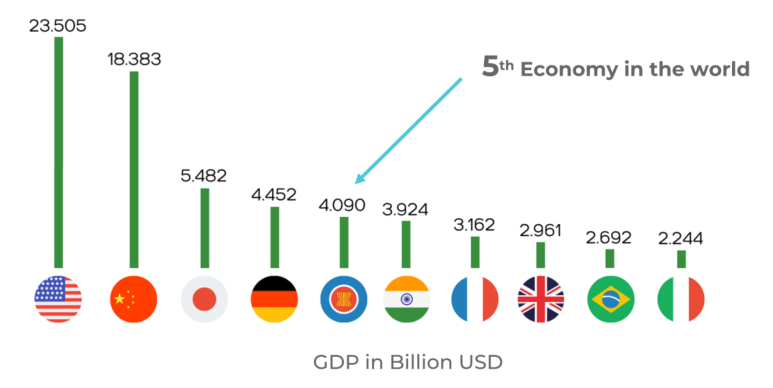Relocating your supply chain to Vietnam
Relocating your supply chain to Vietnam may be a sound strategic decision. Indeed, the coronavirus crisis has highlighted the heavy dependence on China for supplies. From then on, manufacturers became aware of the need to reduce this dependence. Vietnam then appears as a destination of choice for transferring industrial production there.
This article first details the main reasons that push companies to relocate outside China. Then, the article explains why Vietnam is a prime destination for relocating their supply chain.
Why do companies want to reduce their dependence on China?
There are 3 main reasons for this.
Rising production costs in China
Since 2003, the average increase in Chinese wages has been around 12%. This increase reflects the rising standard of living of the Chinese and the emergence of a middle class willing to consume more.
In 2000, US production costs were 22 times higher than in China. Twenty years later, American costs are only 4 times higher than Chinese costs. This shows that China’s competitive advantage in terms of production costs is weakening sharply.
The trade war between China and the United States
The hardening of trade relations between the Americans and the Chinese, initiated by the President of the United States, leads to limiting dependence on China. As a result, US companies are urged to distance themselves from China.
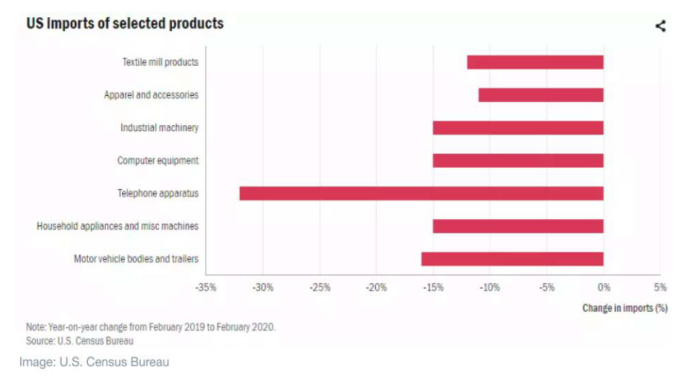
Awareness linked to the coronavirus crisis
For cost reasons, many companies have located their supply chains in China. However, the Covid-19 crisis has resulted in a restriction of flows with China. If the problem of dependence on China was already present before the health crisis, it has raised awareness of the harmful effects linked to this Chinese dependence. Thus, the continuity of service of certain companies could be endangered.
Why choose Vietnam to relocate your supply chain ?
Vietnam’s strengths lie both in the ASEAN zone and in the country itself.
The dynamism of the ASEAN zone
The ASEAN zone represents an important source of economic growth. Indeed, this market contains 650 million inhabitants and is growing at an average annual rate of around 6%. By way of comparison, the European Union has around 500 million inhabitants and the annual growth rate is around 1%. Thus, the 10 ASEAN countries combined form the fifth largest economic power in the world.
Concerning more specifically Vietnam, we can mention its interesting strategic location. Indeed, Vietnam is close to both China and Southeast Asia, making it a central crossroads in Asia.
An open and expanding Vietnamese economy
In recent years, Vietnam’s gross domestic product (GDP) increased continuously until 2019. The current year 2020 is expected to result in a decline in GDP, as is expected to be observed in the other countries.
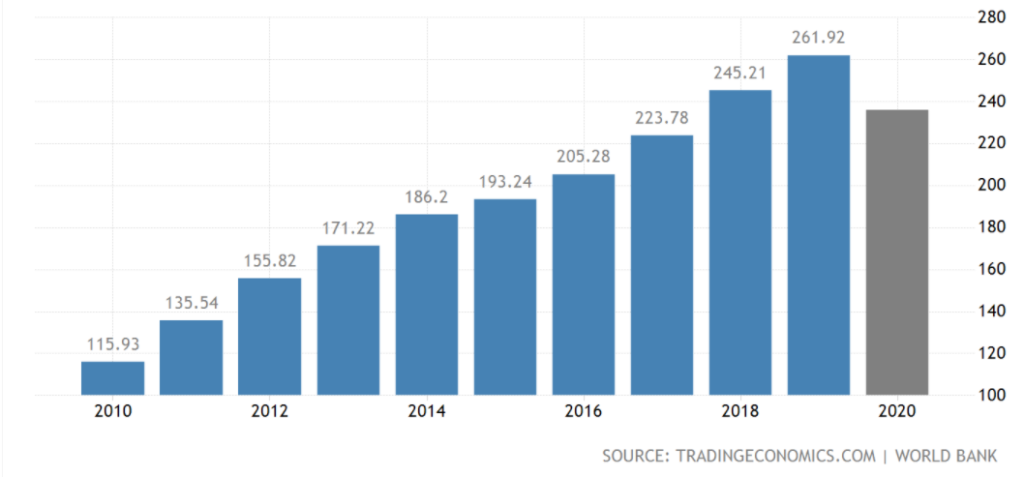
As part of the economic reforms of Doi Moi, Vietnam has invested heavily in infrastructure. These investments largely explain the substantial modernization observed in recent years, particularly in Hanoi and Ho Chi Minh City.
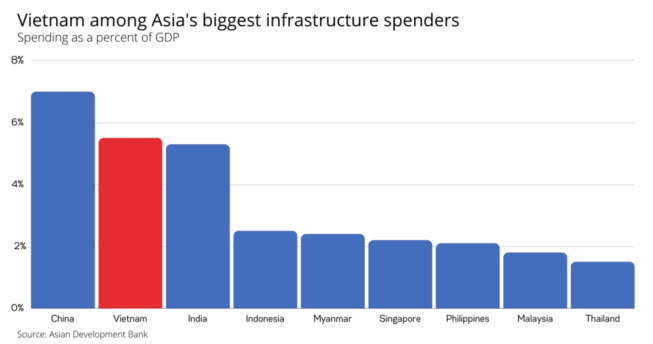
Finally, Vietnam concluded the EVFTA with the European Union on June 30, 2019. This agreement allows for the gradual elimination of customs duties between the EU and Vietnam for a variety of goods. This will ultimately promote Vietnam’s attractiveness for European companies. You can find additional analysis in this article dedicated to the subject.
Vietnam, a new industrial production hub
In the years to come, Vietnam could become a dominant Asian hub for industrial production. As such, recent trends already show an evolution in this direction. By way of illustration, the graph below shows a dramatic increase in US imports in 2019 from Vietnam. The current health crisis and growing mistrust of China are expected to reinforce this trend.
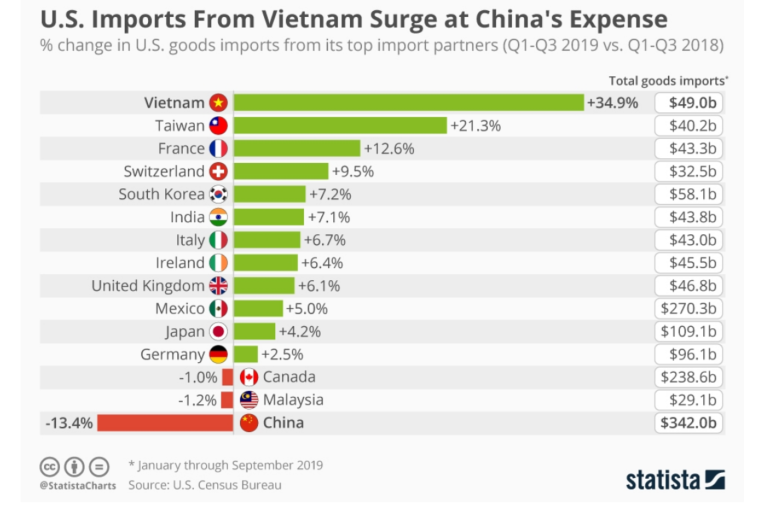
The attractiveness of the Vietnamese workforce
Last but not least, Vietnam can rely on a workforce that is :
- Abundant : the country currently has 97 million inhabitants. This figure is expected to rise to 120 million by 2050 according to the latest population forecasts. This abundant population makes the Vietnamese market an important source of potential consumers.
- Young : The median age in Vietnam is 30.9 years in 2019. The labor force represents around 75% of the total population of the country. On the other hand, almost 40% of the population is under the age of 24, which highlights the arrival of the new generation in the workforce.
- Inexpensive : According to the CIA World Factbook, the average monthly salary in Vietnam is around $ 300, which is three times less than the average monthly salary in China (around $ 900).
In conclusion, relocating your supply chain to Vietnam has many advantages and is an investment on the future. The country is thus positioning itself as an interesting alternative choice in order to reduce the dependence of industrial companies on China.



